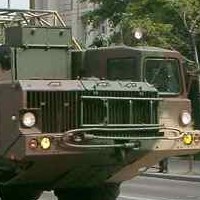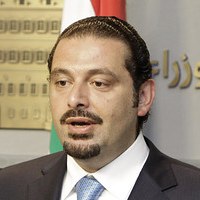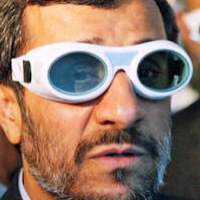![]()
Sun, May 22, 2011 | The Meir Amit Intelligence and Terrorism Information Center

Iran: Criticism of Low Internet Penetration; Details on Website Filtering by Authorities
On the occasion of World Media Day, marked on May 17, Iranian media criticized the insufficient internet penetration rate in Iran compared to other world countries. According to Iranian media, the main reason for the relatively low penetration rate is the faulty internet infrastructure and the restrictions imposed by the authorities, which make it impossible for Iranians to surf the web at an acceptable speed.
Earlier this week, the economic daily Donya-ye Eqtesad (World of Economy) published an editorial titled “Internet penetration in Iran: figures and doubts”. The daily expressed its disapproval of the fact that there exist contradictory figures on internet penetration rate in Iran: the National Internet Development Center estimates Iran’s internet penetration rate at 32.6 percent; the Statistical Center of Iran puts the number at 11 percent; while the figure given by the Internet World Stats organization is 54 percent.
The daily emphasized the data released by the Internet Development Center, according to which 70 percent of Iran’s web users have low-speed connections, while only a small percentage (about one and a half million web users) enjoy high-speed internet access, which is still slow compared to other countries due to the access speed limitations imposed by the authorities (up to 128 kbps). This means that the country’s relevant authorities, particularly the Telecommunications Ministry and the internet service providers, do not effectively cater to the demands of the web users. The daily called on the authorities in charge to bring Iran’s internet access figures in line with other countries, recognize the sizeable difference between Iran and the rest of the world, and look into ways to improve access to fast internet connections and improve the surfing quality of Iranian citizens (Donya-ye Eqtesad, May 15). Mehr News Agency also provided up-to-date information on the number of web users. According to National Internet Development Center data, there were 24,550,000 web users in Iran in March 2011 (representing a penetration rate of 32.6 percent compared to 26.5 percent in March 2010 and 21.8 percent in March 2009). The National Internet Development Center considers every person over the age of two who uses the internet at least once a month as a web user. About 10 million users (some 41 percent of the total web-surfing population) use wireless connections (GPRS) to access the internet, 7 million (about 29 percent) use dial-up modems, 1.4 million (5.7 percent) access the internet using ADSL lines, and 5.6 million (23.3 percent) connect through optic fiber technology.
Mehr News Agency stressed that the internet penetration rate in Iran is low compared to other countries, including some of Iran’s neighbors. Even in countries with similar internet penetration rates (such as Turkey), web users enjoy much greater access to high-speed connections (Mehr, May 14).
This week, the Majles Research Center discussed the need for increased government involvement in initiatives to promote information technology and the internet as part of the multi-year development program. According to the program, about 60 percent of Iranians should gain access to high-speed internet by 2016-2017.
A report published by the center last weekend specifies the projects included in the multi-year information technology and computer development program. The center argued that it is highly important to meet the goals outlined in the program, such as the expansion of electronic government and high-speed internet services.
According to the report, despite cyber threats that, in the past, held back the development of some internet projects, it is necessary to turn the threats into opportunities and continue the trend of information technology development in light of its significance for Iran’s economic and social progress. The Majles Research Center stated that the government must secure the necessary financial resources for the implementation of the multi-year development program (Majles Research Center website, May 13).
Meanwhile, Iran’s media has published information on the authorities’ policy of website filtering. Last year, in accordance with the computer crime law, the judiciary established a committee headed by the prosecutor-general to decide on criteria for website filtering. Members of the committee include representatives from the ministries of education, telecommunications, intelligence, justice, science, and Islamic guidance, the head of the Islamic Propaganda Organization, the head of Iran Broadcasting, a representative on behalf of the internal security forces, an information technology expert, and a Majles representative.
The committee set five main criteria for filtering websites: publication of content that undermines public morality, content that offends the sanctity of Islam, content that compromises public safety and order, content that goes against state authorities and government institutions, and content that encourages computer crime.
Among other things, the authorities filter websites involved in the sale or illegal distribution of passwords and data that may provide access to websites or government and public information; websites that publish content on web espionage, computer system hacking, or encouragement of computer crime; websites involved in illegal online trade or commercial activity; websites that distribute software for combating website filtering or guides on circumventing website filtering; websites that spread content encouraging violence, suicide, and drug use; websites that publish information or links to websites shut down by the authorities, disqualified publications, or media affiliated with groups or factions acting against the law; websites that encourage such crime as violation of public order, damage to property, robbery, forgery, and drug and alcohol smuggling; websites that publish content prohibited by the Supreme National Security Council; websites that publish illegal audio and video works, or works unapproved by the Islamic Guidance Ministry.
Mehr News Agency reported that, according to unofficial data, about 10 percent of websites filtered by the Iranian authorities operate inside Iran, while the remaining 90 percent are foreign-based websites. In an interview given to the news agency, Issa Zarepour, the managing director of the Islamic Guidance Ministry’s Digital Media and IT Development Center, said that the Telecommunications Ministry, rather than the Islamic Guidance Ministry, is responsible for website filtering. Zarepour denied media reports claiming the budget earmarked for website filtering amounts to 18 billion tomans (about 18 million dollars).



 RSS
RSS














Latest Comments
Hello Mike, Thank you for your positive feedback to the article. I felt there wasn’t too much critical analysis of ...
Thanks for this considered and well constructed article. A follow up article on the manner in which the editorial contro...
THE CLUELESSNESS OF CLAIMING THAT OBAMA'S MIDDLE EAST POLICIES WERE A FAILURE CANNOT BE FURTHER FROM THE TRUTH, WHAT THE...
As long as Obama is the president of the usa do not trust the us government......
Thank you for an good read....